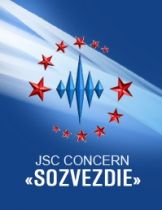Global 5G in Defense Market Analysis Report 2022: Market is Set to Reach a Value of $8,952.30 Million by 2027 Exhibiting a CAGR of 48.50% - ResearchAndMarkets.com
The "5G in Defense Market: Global Industry Trends, Share, Size, Growth, Opportunity and Forecast 2022-2027" report has been added to ResearchAndMarkets.com's offering.
The global 5G in defense market reached a value of US$ 765.2 Million in 2021. Looking forward, the market is set to reach a value of US$ 8,952.30 Million by 2027 exhibiting a CAGR of 48.50% during 2022-2027.
Keeping in mind the uncertainties of COVID-19, we are continuously tracking and evaluating the direct as well as the indirect influence of the pandemic. These insights are included in the report as a major market contributor.
5G refers to the fifth-generation mobile network technology that carries wireless communication and connects objects, machines, people, and devices. It comprises various networks, such as enhanced mobile broadband (eMBB), massive machine type communication (MMTC), and ultra-reliable low-latency communications (URLLC).
Consequently, it finds widespread applications across various industries. For instance, particularly in the defense sector, 5G is widely used to improve and process intelligence, surveillance, and reconnaissance (ISR) systems, streamline logistics systems and enable new methods of command and control (C2).
It further assists in quick response time and faster transmission of videos and images to achieve real-time battlefield results. The network is also widely used to provide enemy infantry real-time operation information at inconvenient, dangerous, and remote areas.
It is also utilized to transmit data over various wireless broadband connections to enhance speed and bandwidth at a multigigabit speed. It also offers ultra-low latency, enhanced network capacity, uniform user experience, high-speed data, and increased reliability.
5G in Defense Market Trends:
The widespread adoption of autonomous defense vehicles and robots in the defense sector is one of the key factors primarily driving the market growth. Additionally, the rising use of 5G in radars to detect and track multiple targets and the surging numbers of cross-border and territorial conflicts are favoring the market growth.
Moreover, various technological advancements, such as the integration of the Internet of Things (IoT), which enables the communication between multiple sensors and connected devices and facilitates high-speed data connectivity, are boosting the market growth.
5G services are rapidly being adopted in augmented reality (AR) for efficient maintenance of gadgets, vehicles, and equipment to train military personnel, which is positively impacting the market growth.
Apart from this, the rapid upgradation of defense infrastructure and the implementation of various government initiatives to support 5G technology are some of the factors creating a positive outlook for the market.
Key Questions Answered in This Report:
- How has the global 5g in defense market performed so far and how will it perform in the coming years?
- What has been the impact of COVID-19 on the global 5g in defense market?
- What are the key regional markets?
- What is the breakup of the market based on the communication infrastructure?
- What is the breakup of the market based on the core network technology?
- What is the breakup of the market based on the network type?
- What is the breakup of the market based on the chipset?
- What is the breakup of the market based on the platform?
- What are the various stages in the value chain of the industry?
- What are the key driving factors and challenges in the industry?
- What is the structure of the global 5g in defense market and who are the key players?
- What is the degree of competition in the industry?
Competitive Landscape:
The competitive landscape of the industry has also been examined along with the profiles of the key players being
- Cisco Systems Inc.
- L3harris Technologies Inc.
- Ligado Networks
- Nokia Corporation
- Nvidia Corporation
- Qualcomm Incorporated
- Raytheon Technologies Corporation
- Samsung Electronics Co. Ltd
- Sierra Wireless Inc
- Telefonaktiebolaget LM Ericsson
- Thales Group
- Wind River Systems Inc. (Intel Corporation).
Key Market Segmentation:
Breakup by Communication Infrastructure:
- Small Cell
- Macro Cell
- Radio Access Network (RAN)
Breakup by Core Network Technology:
- Software-Defined Networking (SDN)
- Fog Computing (FC)
- Mobile Edge Computing (MEC)
- Network Functions Virtualization (NFV)
Breakup by Network Type:
- Enhanced Mobile Broadband (EMBB)
- Ultra-Reliable Low-Latency Communications (URLLC)
- Massive Machine Type Communications (MMTC)
Breakup by Chipset:
- Application-Specific Integrated Circuit (ASIC) Chipset
- Radio Frequency Integrated Circuit (RFIC) Chipset
- Millimeter Wave (mmWave) Chipset
Breakup by Platform:
- Land
- Naval
- Airborne
Breakup by Region:
- North America
- United States
- Canada
- Asia-Pacific
- China
- Japan
- India
- South Korea
- Australia
- Indonesia
- Europe
- Germany
- France
- United Kingdom
- Italy
- Spain
- Russia
- Latin America
- Brazil
- Mexico
- Middle East and Africa
For more information about this report visit https://www.researchandmarkets.com/r/71ukv8
View source version on businesswire.com: https://www.businesswire.com/news/home/20220325005297/en/




